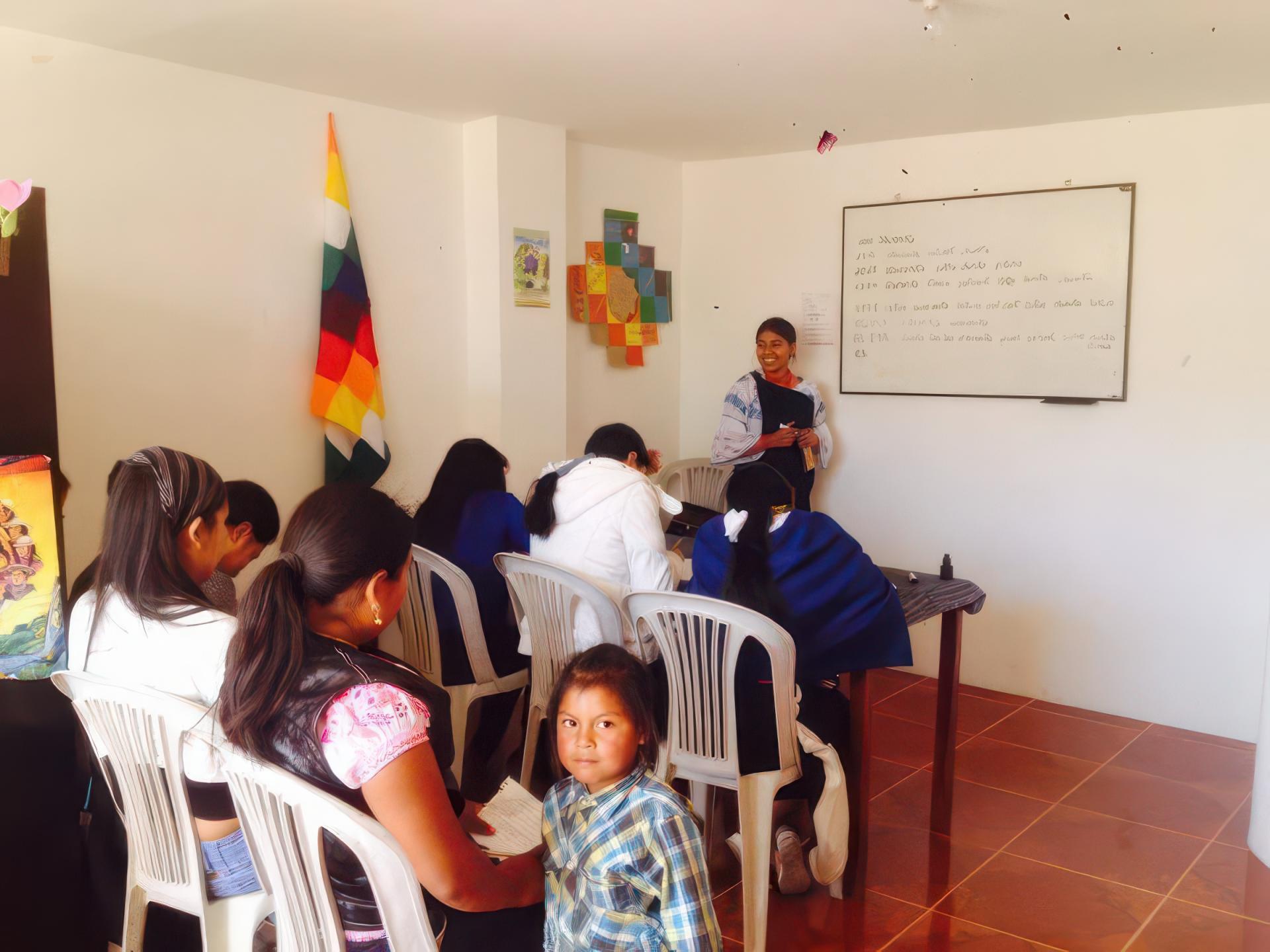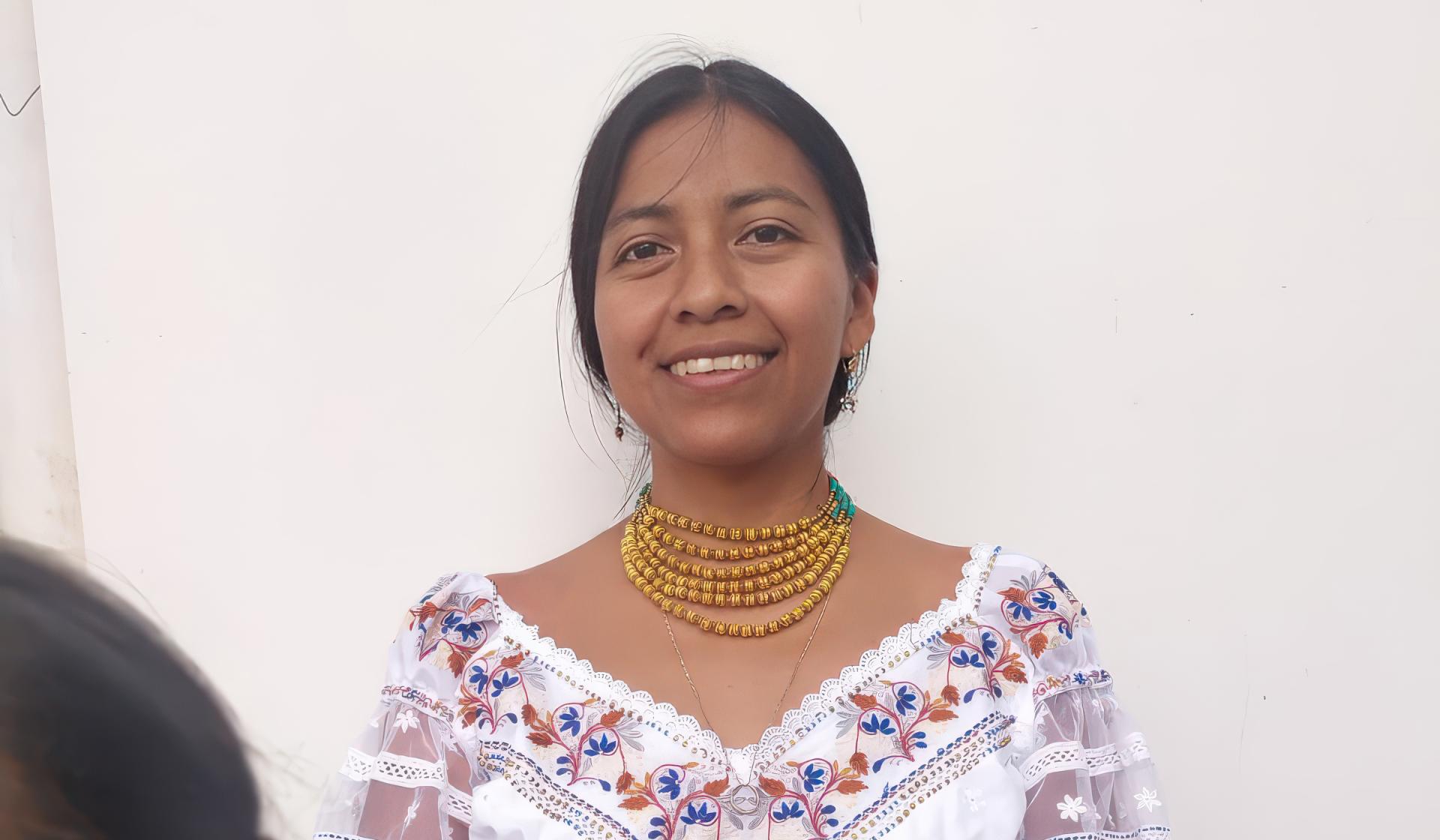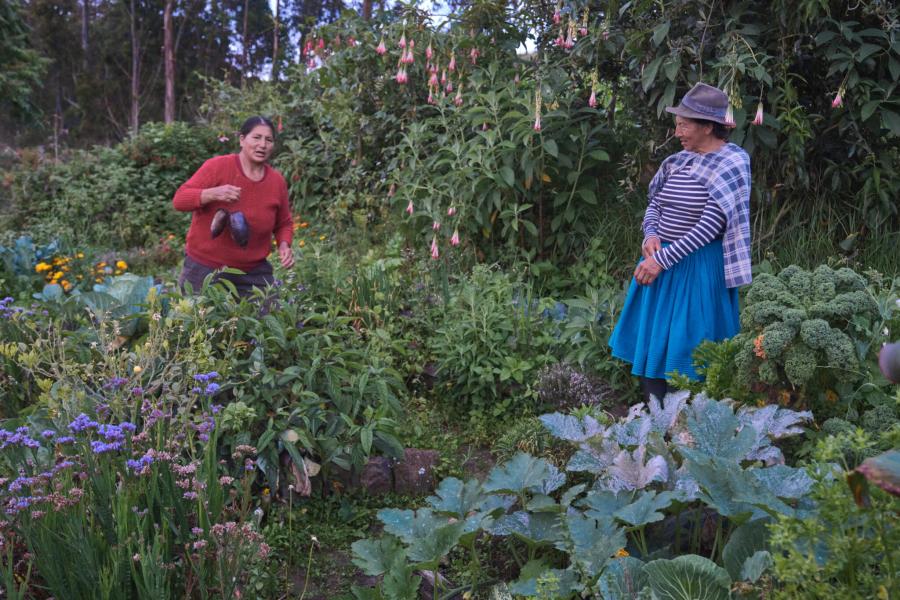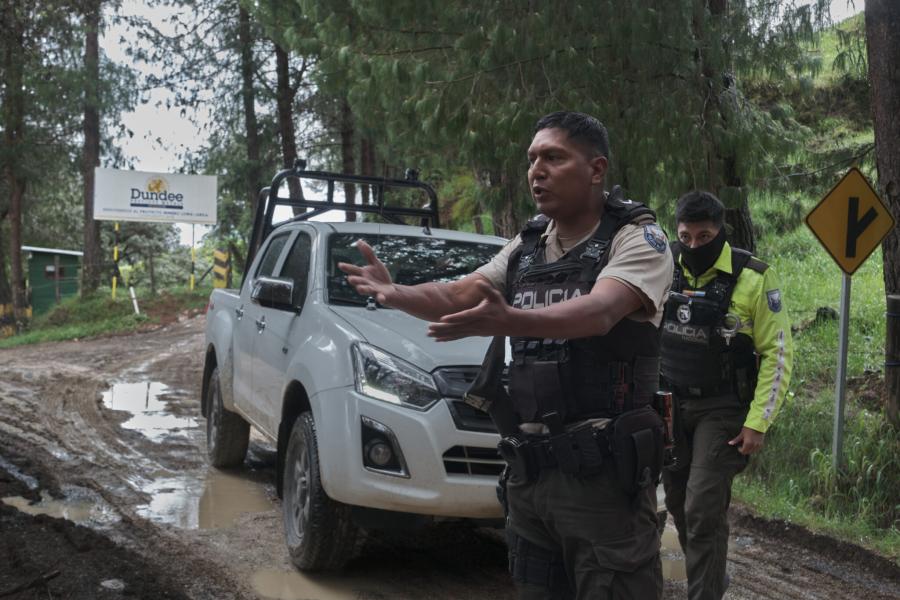
Sisa Anrango (Otavalo Kichwa) is a Kichwa woman from the Puñaru/Punyaro community in Otavalo, Ecuador. She currently works as an online Kichwa teacher specializing in creating fully immersive Kichwa learning spaces for all levels. In 2018, she received a scholarship to travel to the Basque Country, Spain, to participate in a postgraduate course on linguistic revitalization strategies and methodology for teaching second languages at the University of Mondragón. Aside from her roles as a teacher and activist, Anrango is dedicated to being a mother, an identity that has reinforced her efforts to revitalize her culture. For the last decade, Anrango has dedicated herself to researching her culture, rediscovering the history of her family’s beliefs and traditions, and replicating it in her life.
Anrango remembers meeting older people on the streets of Otavalo who sometimes asked her, as a young child, for help in Kichwa. “I remember feeling sad and ashamed at being unable to help them since I couldn’t understand them,” she recalls. “I didn’t know my grand-parents and I always felt a lack of them in my life, so seeing these elderly people on the street and not being able to help them touched me because I couldn’t speak our language.” Although Anrango’s parents dressed her in traditional clothing from the time she was born, as a child they only communicated with her in Spanish, something she would later come to question.
Anrango had depression for much of her youth until a Kichwa course caught her attention. At that time, she was helping her mother with her small trading business and was able to enroll with the money she was earning. “In the course, the importance of keeping our culture and our language alive was discussed. After years of suffering harsh and ugly racism, I was moved to continually hear about how beautiful our culture is and the value of our people,” she says. The same year that Anrango began her Kichwa studies, she would have the most important student in her life—her daughter—whose birth would lead her to reflect even more on the language of her people. She thought about her parents and how “they must have laughed, cried, been angry, and loved in Kichwa. I wanted [my daughter] to live with Kichwa, to connect and reconnect with our identity through Kichwa pride. I wanted my daughter to have an education in Kichwa and feel loved in the language of her ancestors,” she says.

Sisa Anrango teaching her first Kichwa class in 2015.
Six months after her daughter’s birth, Anrango separated from her partner. Now a single mother and unemployed, Anrango was unsure what would come next. She thought about what made her happy: her Kichwa courses. She had memorized all the grammar, and although she still did not fully speak the language, she felt confident enough to teach an introductory course as soon as the opportunity presented itself. Although she did not have many students, she loved to create spaces for collective healing in her first classes, “reminding ourselves that our identity is valuable because society constantly tells us that everything Indigenous is bad.” Through these introductory courses, Anrango would continue to learn more about her language. “[My daughter] was like an awakening. The more I learned, the more I came to understand that everything I am is because my grandparents and great-grandparents were like that.”
In 2018, Anrango took a course on new methodologies for teaching secondary languages, focusing on creating spaces of total immersion so that students learned to speak Kichwa from the first class. The change of systems from grammar and philosophy to more conversational made her realize something: “Conventional education is very violent towards students and that violence permeates the learning process, so when people want to learn something new later in life, they are very afraid of making mistakes, very afraid of speaking, especially people who have left their studies. Conventional education has a dynamic of ridicule, humiliation, and penalization of errors. With each new group I have to give them security that they are in a space where things can be repeated, where they can make mistakes, where they will not be judged.” Applying this new methodology requires patience and a reliance on visuals and physical gestures. It no longer translates word for word, and the concentration required from students is greater. “They leave their comfort zone in the first class, which is key to learning the language and practicing it with other Kichwa speakers,” Anrango says, adding that in her own experience as a Kichwa student, it is better for individual learning and for the vitality of the language to practice everyday speech than to know all the grammatical rules. It was in this second stage of her teaching career when Anrango returned home.

Sisa Anrango.
Fulfilling one of her long-standing dreams, Anrango returned to live permanently in her community in 2021. Since then, she has dedicated herself “to returning to the earth and continuing a more intrinsic and careful life with nature.” Having worked with adults for most of her teaching career, Anrango’s new goal is to teach children. Her goal is not without challenges, however. One obstacle is the general perception of the Kichwa language in the own. “Working with my community is complex. The idea that Kichwa is a backward language from ancient times is strong,” she says. The legacy of colonialism has left Indigenous languages devalued in Ecuador, and the general public does not view Kichwa as economically beneficial to their future. Anrango is working hard to change this narrative by focusing on self-steem and positive development of identity among the young people. “One of the achievements is that [now] at least half of the community meetings are in Kichwa. I also have three projects underway in need of funding. One of them is a collection of poems in Kichwa for three-year-olds about the connection with nature and animals that needs to be illustrated and printed.”
For Anrango, finding a balance between pursuing her passion and dedicating time to her family while earning a decent living is important. In a country where learning English is considered more valuable than learning Kichwa, it can be difficult for Kichwa teachers to be compensated well. “I believe that all people who dare to teach their native language do so with the noblest will in the world, dedicating so much of their time, but we also have families to care for and living expenses to pay. For these educational spaces to be constant and long-lasting, there must be fair and equitable remuneration for the work and effort of language teachers. Society places a lot of responsibility on us as Native Peoples. If the language is lost, it is our fault; if young people stop wearing our clothing, it is our fault; if people decide to abandon their Indigenous identity, it is our fault. Everything is our duty and our responsibility,” Anrango says.
“When I learned Kichwa, I felt that I was also completing something that I was missing. I remember that there was a moment in my youth when I was very angry with my father and mother, thinking that they were so weak that they let themselves be influenced by society and they didn’t teach me Kichwa when I was little,” Anrango says. “Reflecting on that transition with my parents, perhaps I could have done it with more patience and more affection. To the young people who are learning Kichwa, have a lot of patience and faith in learning the language of your ancestors and take advantage of all the resources available in Kichwa. For those who have Kichwa speakers in your families, encourage them to speak Kichwa with you. Decorate your family environments with expressions in Kichwa. Greet and show affection to your relatives in Kichwa. That was the dream of our grandparents, that one day we would finally be free and could exist as we are without being violated. To live in Kichwa with our families, friends, and neighbors is to finally enjoy that freedom for which we have fought so hard. We have to recognize those achievements and take advantage of this freedom that we now have.”
To learn more about Sisa Anrango’s Kichwa courses and support her projects, visit, linktr.ee/SisaAnrango.
Top photo: Sisa Anrango (center right) with her daughter and five Kichwa Elders after the Shutichiy ritual at the Taxopampa waterfall.


